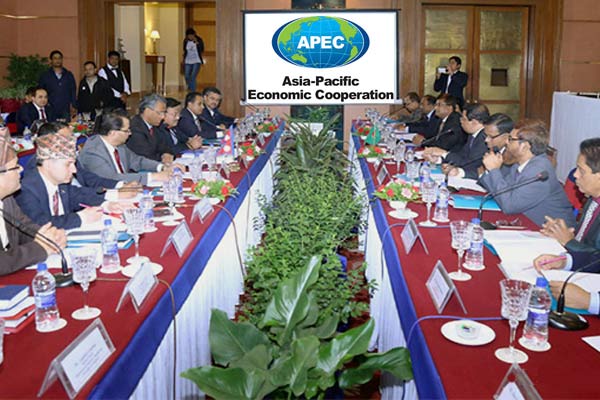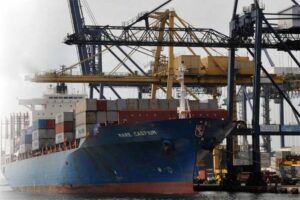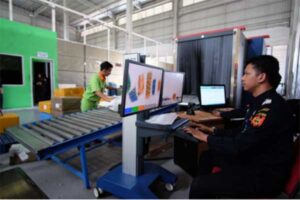
Referring to previous landmark studies by Robert E Baldwin, Mutti, and Richardson (1980), De Melo and Tarr (1990) and Takacs and Winters (1991), in the long run, economic liberalization including economic cooperation that generates immediate costs, both small and large, the benefit is always higher than that hence net benefit is positive. Costs from economic cooperation such as those arising from domestic market liberalization are fixed costs which decrease over the time while its benefit, the opposite, increases.
In other words, the decision to not join any economic cooperation may not create immediate costs but in the long run the cost of not joining or being discriminated from its potential economic partners will remain high. This long run cost is generated from the so-called trade diversion and trade creation. Trade diversion happens when our trading partners shift trade relations from us who has not joined the cooperation framework to our competitor countries who have joined. At the same time, it generates trade creation for them. This explains why most of the time, the decision to join any type of economic cooperation including bilateral ones is influenced by our competitors even when we may not be ready for it. This is also known as a ‘snowballing effect’.
Speaking of readiness, most countries, especially developing ones are not ready to liberalize their market but the risk of being discriminated and isolated from trading partners within them is too costly especially in the long-run, therefore deciding to join would be most rational even when the immediate cost of joining appears high.
This happens to any country including Indonesia where joining an economic cooperation is a natural demand and the pressure increases when competing countries, usually neighbouring countries, has joined and gained from trade creation at the cost of our trade diversion. To some extent, this explains why Indonesia has become more enthusiastic to open economic cooperation with the European Free Trade Association or the Trans-Pacific Partnership (TPP) ever since its ASEAN partners such as Singapore, Malaysia and Vietnam joined these frameworks.
Bilateral
Indonesia has recently conducted bilateral economic agreements both under the Preferential Trade Arrangement (PTA) and the Comprehensive Economic Partnership Agreement (CEPA) with several countries. In the context of regional economic cooperation some previous studies found that direct Bilateral Free Trade Agreement (BFTA) between an individual member states to non-member state has the potential to increase the gap between member states that have and have not joined (Panagariya, 2000) (Tumbarello, 2007) (Kawai & Wignaraja, 2009).
In addition, BFTA can reduce the discriminative impact of regional cooperation on non-member states (Manger, 2005). This makes regional economic cooperation become more complicated and hard to achieve its objective in attracting long-run investments (FDI) as the BFTA substitutes this function from the regional economic role. In Southeast Asia, this phenomenon is known as ‘noodle-bowl phenomenon’ which refers to its complicated appearance (Richard E. Baldwin, 2006).
BFTA also poses a higher risk compared to that of bilateral under regional frameworks such as ASEAN and non-member states like the ASEAN+1 FTA. This risk however can be avoided by excluding issues considered sensitive to developing countries from the negotiation (Manger, 2005). Again however, developing country member states in ASEAN including Indonesia, follows developed country member states like Singapore in having BFTA.
In addition to bilateral economic cooperation with Japan, Indonesia conducts several BFTA with Pakistan, Korea, EFTA, Australia, Iran and Chile. A study by Lembaga Penyelidikan Ekonomi dan Masyarakat (LPEM) in 2015 using Regulatory Impact Assessment (RIA) questionnaires covering brief cost-benefit analysis on all of these BFTAs found that Indonesia may potentially benefit from these if it negotiates more on trade issues when its partner is a less advanced economy, in terms of GNI per capita and more on investment issues when its partner is a more advanced economy.
Regional
As for the regional economic cooperation, Indonesia is one of ASEAN’s founding members. As the only ASEAN member eligible to join the G-20 given its large economic size in terms of total GDP, Indonesia plays an important role in ASEAN’s economic integration progress. ASEAN has moved from a free trade area (ASEAN FTA) to an economic community (ASEAN EC) which broadens her economic cooperation coverage from trade to investment and services.
A study by LPEM (2014) on upper-middle firms both manufacturers (343 firms) and service sector firms (187) in six big cities all around Indonesia found that in the field, Indonesia’s firms are ready to face the ASEAN Economic Community. This confirms that Indonesia’s business sector has become more used to competition, both with its ASEAN counterparts as well as with tougher competitors such as China, particularly after the ASEAN-China FTA. The economic integration in ASEAN is affected by the economic cointegration among its members. The more cointegrated the economic level within its members, the higher their economic integration.
The TPP
As the latest challenge looming in, the TPP covers four ASEAN members: Singapore, Brunei, Malaysia and Vietnam. This will create a discriminative impact within ASEAN members between those that are already members of the TPP and those which are not. As USA, Japan, Australia and New Zealand, which are ASEAN’s big economic partners are members of the TPP, the impact particularly in the long-run is estimated to be significant.
This will increase the economic gap in ASEAN which may potentially weaken the economic integration among its member states and in the end hamper ASEAN in achieving its economic community objective. However, given that becoming a member state of the TPP is not a simple and quick process, Indonesia needs to advocate and mitigate potential negative impacts of the TPP by conducting economic cooperation with TPP’s large economy members such as USA, Japan, Canada and Mexico. Fortunately, Indonesia has two forms of economic agreement with Japan named the Indonesia – Japan Economic Partnership Agreement (IJEPA) and as an ASEAN members in ASEAN – Japan FTA.
Recently, ASEAN has developed a summit with USA which will hopefully be the forerunner for the ASEAN – US FTA, which among its key principles is to respect and support the ASEAN-Centrality and ASEAN-led mechanism within the context of Asia-Pacific’s regional architecture framework http://www.asean.org/joint-statement-of-the-asean-u-s-special-leaders-summit-sunnylands-declaration/).
The other challenges remain such as to enhance Indonesia’s economic relations with at least Canada and Mexico, which unlike those with Australia and New Zealand, both countries have no economic agreement with Indonesia as yet. Indonesia’s rank in both countries’ markets is less than that of Malaysia and Vietnam and given that the latter have both already become members of the TPP, Indonesia’s rank is estimated to be even lower.
Regional Plus
Another power house to enhance ASEAN Plus frameworks is through the role of RCEP (Regional Comprehensive Economic Partnership) which members are basically the ASEAN+6 members (ten ASEAN members plus China, Japan, South Korea, Australia, New Zealand and India). In terms of the productivity index (percentage of GDP to world’s GDP divided by the percentage of population to world’s population) TPP with 3.36 is much higher than the RCEP with 0.6 but in theory, the RCEP is more simple and practical. This can be utilized to boost ASEAN’s economic integration and compensate for the discriminative impacts of TPP in Southeast Asia.
Conclusion
In the long-run, all economic cooperation gives positive benefit where as its immediate costs from joining decreases over time. Unfortunately, the immediate cost is more apparent while the net benefit will only be seen in the long-run. This explains why it is uneasy to understand the positive impacts of economic cooperation. The difficulties to comprehensively understand the economic cooperation has made most people partially realise the cost and benefit of the cooperation, not to mention political economic motives which are driven by short-run self-interests. Yet the ‘snowballing effect’ sometimes helps a country, including Indonesia, to finally make the decision to join simply because no country wants to be discriminated.
Indonesia Decided to Join an Economic Cooperation






